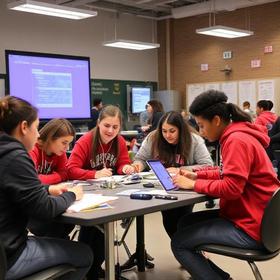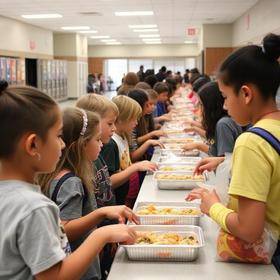The percentage of students achieving proficiency in math is <50% (which is lower than the Minnesota state average of 65%).
Quick Facts (2025-26)
- School Type: Alternative school
- Grades: 9-12
- Graduation Rate: <50% (Top 1% in MN)
- Math Proficiency: <50%
- Source: National Center for Education Statistics (NCES), MN Dept. of Education
Top Rankings
Redwood Valley Alternative ranks among the top 20% of public schools in Minnesota for:
Category
Attribute
Community Size
School Overview
The teacher population of 1 teachers has stayed relatively flat over five school years.
School Type
Grades Offered
Grades 9-12
(No virtual instruction)
(No virtual instruction)
Total Students (22-23)
1 student
Total Classroom Teachers
1 teacher
School Calendar
Last Day of School
Mon. May 25, 2026
School Mascot
Cardinals
School Rankings
Math Test Scores (% Proficient)
(09-10)<50%
65%
Student-Teacher Ratio
n/a
13:1
American Indian
n/a
2%
Asian
n/a
7%
Hispanic
n/a
11%
Black
n/a
12%
White
100%
62%
Hawaiian
n/a
n/a
Two or more races
n/a
6%
Graduation Rate
(15-16)<50%
82%
Eligible for Free Lunch (01-02)
25%
19%
School Statewide Testing
School District Name
Source: National Center for Education Statistics (NCES), MN Dept. of Education
School Notes
- School Mascot: Cardinals
Profile last updated: 02/09/2025
Frequently Asked Questions
What is the graduation rate of Redwood Valley Alternative?
The graduation rate of Redwood Valley Alternative is 50%, which is lower than the Minnesota state average of 82%.
How many students attend Redwood Valley Alternative?
1 students attend Redwood Valley Alternative.
What is the racial composition of the student body?
100% of Redwood Valley Alternative students are White.
What grades does Redwood Valley Alternative offer ?
Redwood Valley Alternative offers enrollment in grades 9-12 (No virtual instruction).
What school district is Redwood Valley Alternative part of?
Redwood Valley Alternative is part of Redwood Area School District.
School Reviews
Review Redwood Valley Alternative. Reviews should be a few sentences in length. Please include any comments on:
- Quality of academic programs, teachers, and facilities
- Availability of music, art, sports and other extracurricular activities
Recent Articles

The Impact of Social Media on Students – 2025 Updated Insights
Explore how social media affects students’ academic performance, behaviour and wellbeing in 2025 with expert insights and policy updates.

The Push for Career and Technical Education (CTE) in 2025
Discover how CTE is transforming U.S. high schools and colleges in 2025: new policies, updated data and best practices for students and educators.

School Lunch Programs: A 2025 Update on Past and Present
Explore the evolution of U.S. school lunch programs, updated for 2025—policy, participation, nutrition, and how schools serve students today.





